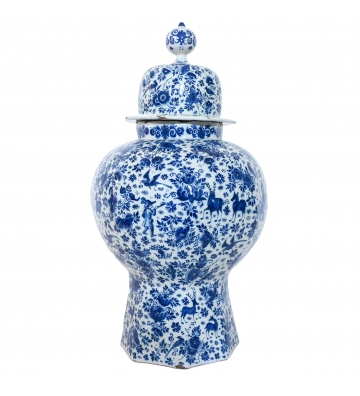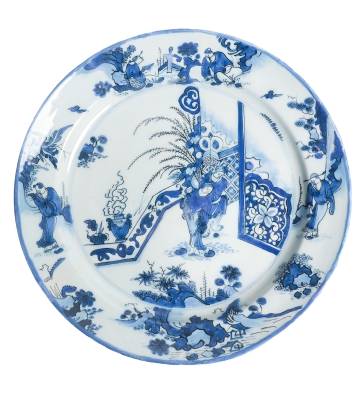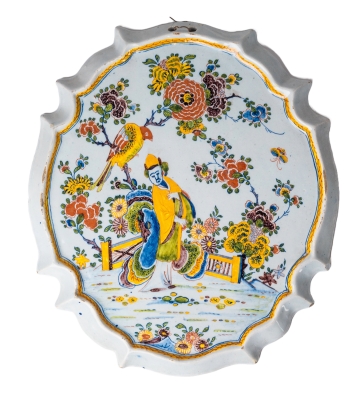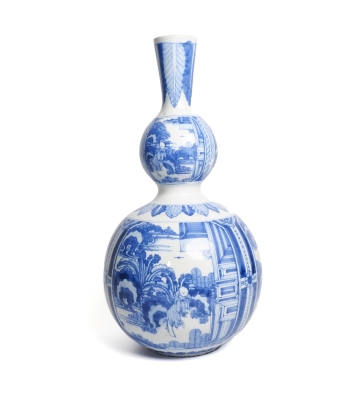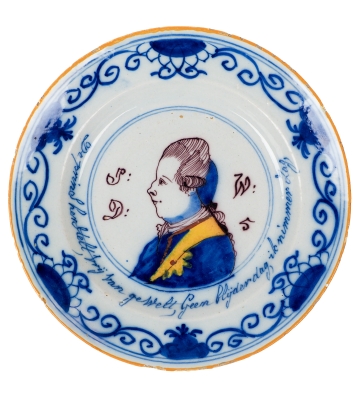This Delft Blue vase is likely a product of De Metaale Pot factory (1670-1775), under the stewardship of Lambertus van Eenhoorn (1651-1721) made in the early 18th century.
Its unique animal motifs, mythological creatures and floral patterns make it a remarkable piece reflecting the exceptional quality of ceramics produced by the factory around this time. The elaborate animal decoration is rare, as most Delftware from this time focused more on floral and landscape designs.
We can find birds, a tiger-like animal, deers, horses and even a unicorn depicted. The unicorn may be a wink of the creator, whose last name is unicorn in Dutch. Also we can find persons depicted on the vase, namely a hunter with a gun, a couple in baroque costume carrying a fan, and a similar individual.
The remarkable baluster shape of the vase, large size and its design further enhance its historical significance, offering a glimpse into the refined taste of European aristocracy. Whether it was part of a larger garniture or an individual piece, it is clear that this vase was made with the utmost care and skill, reflecting the high standards upheld by Lambertus van Eenhoorn and his workshop
To date, only one other Delftware object with such intricate animal imagery is known, although other objects from around 1700 also feature animals in their decoration, many of which were produced under Lambertus van Eenhoorn’s direction.
De Metaale Pot and Lambertus van Eenhoorn De Metaale Pot was one of the most renowned Delftware factories, established in 1670 by Willem Cleffius along the Lange Geer canal in Delft. The factory became famous for producing high-quality ceramics that mimicked the appearance of metal, especially silverware, which was highly prized during the period. The factory rose to prominence under the leadership of Lambertus van Eenhoorn (also known as Lambertus Cleffius), who took over in 1679 following his father’s death. Under his direction, De Metaale Pot became a key player in the luxury ceramics market, producing exquisite Delftware sought by European aristocracy. The factory was known for its attention to detail and craftsmanship, producing a variety of luxurious sets and decorative pieces. One of the most significant commissions during this time was the Lobkowicz service for Prince Wenzel Ferdinand Lobkowicz of Bohemia. This set, produced between 1671 and 1691, demonstrates the factory’s ability to replicate fine silverware and its high-quality ceramic craftsmanship. The set is now housed in the Lobkowicz Collection in Nelahozeves Castle, Czech Republic. De Metaale Pot was recognized in the Hedendaagsche historie of 1742 as one of the finest Delftware factories. The factory continued to produce exceptional pieces for over a century, but its golden age largely corresponded with Lambertus van Eenhoorn’s leadership.

